The Rainbow Mountain, or Vinicunca, as known by the locals, is one of the best tourist destinations in Peru today. Nestled majestically in the remote landscapes of the Andean Mountain range, the 7 Color Mountain Peru is a geological wonder that has become a destination that sparks curiosity and admiration among adventurers and nature lovers alike.
The indescribable beauty of this mountain has captured the hearts of thousands of visitors and ignited curiosity among those wondering: Why is Rainbow Mountain, Peru colorful? How was the 7 Color Mountain formed? What mysteries hide behind its impressive color palette? How did this earthly canvas taken from a dream come to be? In this blog, we will unveil the best-kept secrets about the origin of the vibrant colors that adorn the Rainbow Mountain of Peru, from the geological forces that shaped it to Mother Nature’s artistic intervention. Get ready to be amazed and fascinated with every detail as we unravel the mysteries of this natural gem in the Peruvian Andes! Are you ready?
What is the Rainbow Mountain in Peru?
The Rainbow Mountain, or Vinicunca, is an astonishing natural phenomenon in Cusco, Peru. This impressive landscape has become one of the country’s most popular tourist destinations due to its uniqueness and unparalleled beauty.
What makes this mountain so special is its extraordinary color palette. The mountain’s surface displays a dazzling combination of colors ranging from pinks, reds, greens, blues, and yellows to browns, creating a visual spectacle worthy of a fairy tale.

Rainbow Mountain History
Rainbow Mountain remained hidden under glaciers and snow for many years, limiting its visibility and knowledge. However, Vinicunca, Peru, has emerged as a renowned international attraction recently.
In 2015, this natural gem of the rainbow mountains in Peru revealed itself to the world, shedding its old white cloak little by little due to the impact of climate change. Since then, it has become an unmissable destination for avid travelers seeking unique experiences and unforgettable glimpses. It’s no wonder that thousands of brave adventurers embark on the challenging hike to contemplate this geological wonder and take Rainbow Mountain Peru photos. Each step in the ascent promises wonders to discover, an opportunity to feel the strength and humility only nature can provide.
Origin of the Rainbow Mountain Peru
The Rainbow Mountain owes its astonishing beauty to centuries of geological activity and changes in nature. The interaction of minerals and sediments over millions of years has created this breathtaking spectacle that leaves us breathless. Red clays, calcium carbonate-rich sediments, ferromagnesian compounds, and other combinations of elements interweave to paint an unimaginable color palette.

The Secret of the Andes Revealed
Located in the Cusco region, Rainbow Mountain Peru is a natural treasure hidden for centuries, whose access used to be a challenging 15-kilometer hike. But thanks to a new route traced for tourist buses, the trek on foot has been considerably reduced, allowing us to admire this wonder in an exciting round trip of approximately 7 kilometers.
Real Rainbow Mountain Peru
The journey to the real Rainbow Mountain Peru is full of awe and wonder. From the start of your trip to Cusco to your arrival at the mountain, every step you take will bring you closer to this natural miracle. The Rainbow Mountain trek rewards you with panoramic views of the Peruvian Andes, and upon reaching the famous viewpoint, you’ll witness a panorama that seems taken from a dream.
The Different Layers
The beauty of Vinicunca, one of the most impressive rainbow mountains in Peru, is so captivating that each color stands out distinctively as if painted by a supreme artist. But why is rainbow mountain Peru colorful? How were these dazzling hues formed?
The answer lies in an intricate geological dance, where volcanic activity and tectonic movements of the Nazca plates played a key role. Over millions of years, the minerals within were eroded and exposed by Mother Nature or Pachamama, revealing the wonder that now amazes both locals and visitors.
Each color in this chromatic spectacle has a unique story:
- The delicate and subtle pink comes from red clay, mud, and sand.
- The pure and radiant white originates from substances rich in calcium carbonate, such as quartzite, sandstone, and marl.
- The intense and passionate red is composed of clays and shale.
- Meanwhile, the mysterious depth of the greens and blues comes from a combination of phyllite and clay rich in ferromagnesium.
- With its natural charm, the earthy brown originates in rocks and magnesium.
- And finally, the radiant and luminous yellow is a canvas of iron sulfide layers.
Each hue in this symphony of colors transports us to a world of geological wonders, where nature becomes the master artist. As we explore the Rainbow Mountain of Peru, we will witness the most astonishing and beautiful creation we have ever seen. By following the marked trails, we can admire its beauty without damaging the distinctive lines that shape this earthly rainbow.

Why Preserve the Area?
Every day, more and more visitors travel from Cusco to Rainbow Mountain, Peru, which means the soil will wear out. If we stay on the designated trails, we won’t cause harm to Vinicunca or the adjacent Red Valley.
Upon arrival, you’ll see that touching the mountain is not allowed. The more people touch it, the more it will slowly erode and lose its beautiful appearance. It is necessary to preserve the area to protect our land and its natural elements.
In addition to being one of the most beautiful and colorful Peru mountains, the Rainbow Mountain is a natural habitat for llamas and alpacas, which harmoniously blend with the Andean landscape. Preserving this environment is essential to protect the biodiversity and ecological balance of the area.
The Call for Preservation
We must protect and preserve Rainbow Mountain. The locals understand the fragility of this natural treasure and have taken measures to ensure its conservation. By following the rules of preservation and responsibility, we can experience the greatness of this landscape without leaving negative footprints. Each step in the ascent becomes an intimate connection with nature, feeling the strength and humility that only Mother Earth or Pachamama can offer.

FAQs about Rainbow Mountain
Is Rainbow Mountain worth going to?
Yes, it is definitely worth going to Rainbow Mountain, Peru. It is a unique and fascinating experience that will marvel you with its natural beauty and connect you with the land’s magic.
Where is the Rainbow Mountain?
The Rainbow Mountain, also known as Vinicunca, is located in the Cusco region, in the Andes mountain range, near Pitumarca. It is one of Peru’s most popular natural attractions due to its beautiful colors and unique landscapes.
At what altitude is Rainbow Mountain located?
Rainbow Mountain, also known as Rainbow Mountain or Vinicunca, is located at an altitude of approximately 5,200 meters above sea level.
How long does it take to trek to Rainbow Mountain?
The time required for hiking to Rainbow Mountain can vary depending on each person’s starting point and fitness level. Generally, the hike from the starting point to the summit can take 2 to 3 hours, depending on the walking pace and stops during the journey.
Is it hard to hike Rainbow Mountain?
The hike to Rainbow Mountain can be challenging, especially for those who are not acclimatized to the altitude. The hike involves a significant ascent, and the altitude can make breathing difficult. It is recommended to be in good physical shape and take the time to acclimate in Cusco before embarking on the hike.
How far is Rainbow Mountain from Cusco?
Montaña de Colores is located approximately 100 kilometers southeast of Cusco in the Andean region of Peru. In general, the drive from Cusco to the hike’s starting point can take approximately 3 to 4 hours.
When was Rainbow Mountain discovered?
The Rainbow Mountain has been known to local communities for centuries, but it gained international popularity in 2015 when images and news about its stunning natural beauty spread.
How to get to Rainbow Mountain Peru?
It is usually done by taking an organized tour that includes transportation by car from the city to the hike’s starting point. Local agencies and tour guides often offer tours.
Is it better to go to Rainbow Mountain in the morning or afternoon?
We recommend going to Rainbow Mountain early in the morning. The weather will likely be stable in the morning, with fewer clouds, allowing for more precise and sharper panoramic views. Additionally, you’ll avoid the crowds that arrive later in the day.
Is Rainbow Mountain near Machu Picchu?
Yes, Rainbow Mountain is located in the same region as Machu Picchu, in the Cusco region, Peru. However, it is not close in terms of distance. They are located in different valleys, and separate trips are required from Cusco to each place.
What is the best time of year to visit Rainbow Mountain Peru?
The best time to visit Rainbow Mountain is during the dry season, which runs from April to October. During these months, the weather is usually more stable, with less rain and clouds, allowing for better panoramic views.
Do you need hiking boots for Rainbow Mountain Peru?
Yes, it is recommended to use hiking boots for the hike to Rainbow Mountain. Hiking boots provide good support for your feet and ankles, which is especially important on uneven and steep terrains. Also, be sure to wear appropriate and comfortable socks to reduce the risk of blisters and discomfort during the hike.
Can you do Rainbow Mountain without a tour?
Technically, hiking to Rainbow Mountain alone is possible without an organized tour. However, remember that the hike takes place in remote and challenging-to-access areas, so it is recommended to have local guides and a reliable tourism agency to ensure safety, obtain proper information, and respect the natural environment and local communities.
Is it safe to go to Peru right now?
Peru is a safe and welcoming destination for travel at this time. After social conflicts and strikes that occurred earlier this year in the southern part of the country, the situation has stabilized significantly, and tourism has returned enthusiastically to this beautiful nation. Visitors can enjoy the rich culture, fantastic nature, and hospitality of its people with confidence.
Read more / FAQs about Rainbow Mountain.

Embark on a Journey of Colors
The Rainbow Mountain in Peru is much more than just a tourist attraction; it is a gift of nature that has withstood the test of time to dazzle us with its splendor. It reminds us that our Earth is an endless source of wonder and surprising gifts. Each visit to this natural wonder is an opportunity to connect with nature, appreciate its immense beauty, and reflect on our role as responsible guardians of the environment.
At Salkantay Trekking, we offer several hiking alternatives to discover one of the best colorful Peru mountains. So, I invite you to lace up your hiking boots and immerse yourself in this thrilling journey. May the Rainbow Mountain and its vibrant colors captivate you as much as they do me?

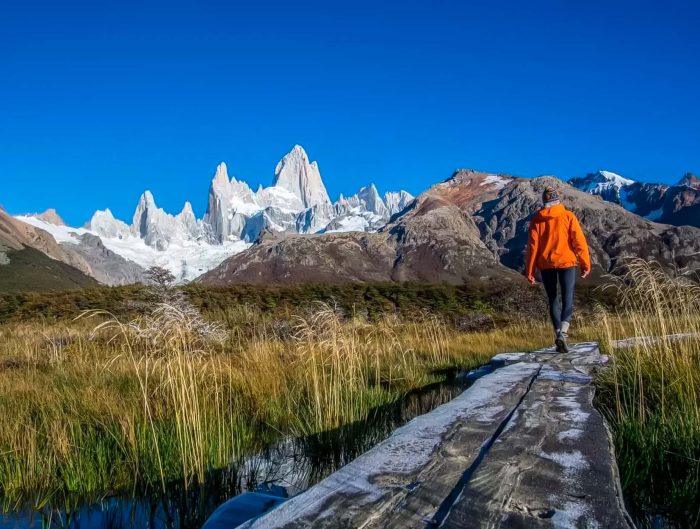

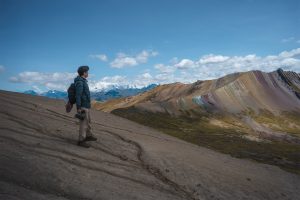
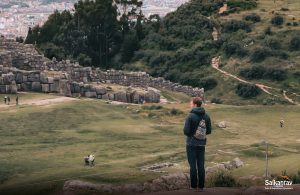
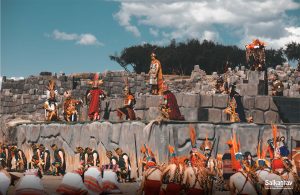


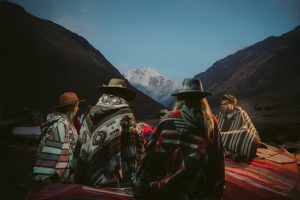
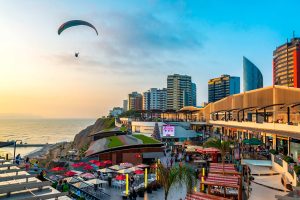

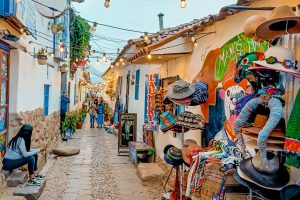
Leave A Reply